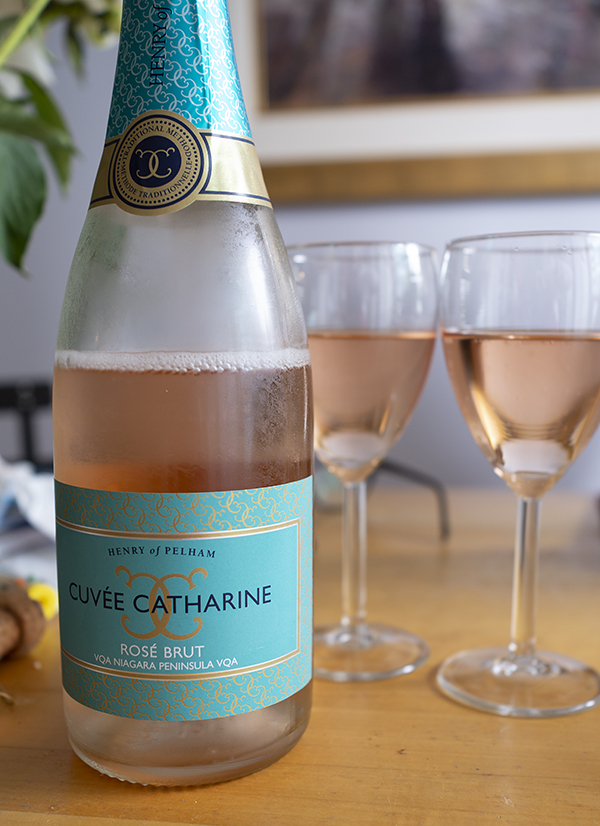I’m sitting here drinking a glass of one of my favourite sparkling wines and thinking about the name Pelham.
If you know anything about Pelham at all, you know that it rhymes with “vellum.” Beyond that, you may, as I first did, associate it with one of two things. But there is one more thing I associate it with now.
The first thing you may think of is The Taking of Pelham One Two Three, a 1973 book and then a 1974 movie (and then a 2009 movie) about a hijacking of a subway train in New York City. Pelham One Two Three means that the train left the Pelham terminus (Pelham Bay Park Station on the Pelham (number 6) line in New York City) at 1:23.
The second thing it may bring to mind is the place that gave the name to the subway station, book, and movie: Pelham Bay Park in New York City. You might know it only as the destination of a subway line that you never take to the end. If you do, you will be aware that it is in the Bronx, the only mainland part of New York City – a borough that has not had a very good public image.
But Pelham Bay Park is not the sort of thing most people think of when they think of the Bronx. Pelham Bay Park is in the northeast corner, up against the Connecticut border, and it’s the largest park in New York City. It’s more than three times the size of Central Park and more than five times the size of Prospect Park. And along with greenery, hills, water, and a Winged Victory monument, it has a beach that’s more than a mile long: Orchard Beach, sometimes called the Bronx Riviera. (I haven’t been there. Yet.)
And the third thing Pelham now makes me think of? We’ll get there… after we look at where the name comes from. And there will be a twist at the end.
The park got its name from Pelham Manor, which was the name given to it in the 1600s by an English settler named Thomas Pell. Pell didn’t originally have the name Pelham, but he took it for his estate. It may seem evident that he named it Pelham because his name was Pell and the -ham is a common place name suffix in southern England (from the same root as gives us home), but some sources say that it was because his tutor was named Pelham Burton. I suppose that both may have been factors.
Another possible influence is that Pelham was an English family name of some note by the 1600s. The first prominent Pelham was Sir Nicholas Pelham, who died in 1560; his wife was a first cousin of Anne Boleyn. His son was Sir Thomas Pelham, 1st Baronet, and a line of baronets and then barons followed, to which we will return.
Where did the Pelhams get their name? Presumably at least one of their forebears lived in Pelham, in Hertfordshire – which has in the intervening centuries dissolved into three villages and the surrounding county. The villages are Brent Pelham, Stocking Pelham, and Furneux Pelham (which is pronounced “furnux pellum”). The latter of them has, among other things, a church – St. Mary the Virgin – with a clock on its spire that is framed by the motto “TIME FLIES / MIND YOUR BUSINESS” (two phrases likely often heard many times each on Orchard Beach, by coincidence).
And what is the etymology of the name Pelham? We know that -ham meant ‘homestead’, more or less; different sources have different views on what the pel- was, but it may have meant ‘pool’, or it may have meant ‘tannery’, or – and my experience and education incline me to see this as most credible – it may have been from someone’s name, documented as Peotla, which meant…
Say, it’s time for another sip of this lovely pink fizzy, isn’t it?
Now where were we.
…sorry, ancient Anglo-Saxon names are not always etymologically transparent, and my resources have limits. I don’t know why Peotla was called Peotla.
So, now. Pelham is a name that had a certain English stature and pedigree. That was no obstacle to what is now Pelham Bay Park having been the site of a Revolutionary War battle, the Battle of Pell’s Point, whereat the Americans resisted a British assault. On the other hand, it was also no obstacle to some of the Pell family being Loyalists and decamping to Canada. One of those, Joshua Pell, went first to Nova Scotia and then was granted lands in the Niagara region of Upper Canada (these days called Ontario).
And this gets us to my third thing… soon.
Pell’s land in Niagara was named Pelham after his family’s home in New York. It became Pelham Township, which over the intervening times has become the Town of Pelham, which is now part of Niagara Region (note the capital R now). Pell was one of many Loyalists who left the USA for Canada after the Revolution. Another one such was Nicholas Smith, who was awarded some land on the north side of Pelham Township – not near the beach of Lake Ontario, but on land where you could put an orchard, anyway (orchard? beach? are you following?). In the 1840s, his son, Henry Smith, built an inn and tavern at a crossroads on a main road through the area, right at a toll gate. For amusement, Henry signed his tavern’s liquor licence as Henry of Pelham.
How was that amusing? In the same way as someone today named Winston living in a place named Churchill might find it amusing to sign something as Winston of Churchill. You see, the prime minister of England nearly a century earlier (1743–1754) was Henry Pelham – who was (I know you’re wondering) the great-great-great grandson of Sir Nicholas Pelham, whom I mentioned above.
So Henry Smith had no direct connection to the Pelham family, nor to the Pell family who had taken the Pelham name for their estate, but he took the name anyway for his inn. Henry and his wife Catharine made themselves a decent living, and their ancestors farmed the land for some time, even planting some of Canada’s first vineyards. And then over the years the land passed into other hands.
Until 1982, when Paul and Bobbi Speck bought several parcels of the original farm, thereby bringing it back to descendants of Henry Smith. And then they started a winery.
Guess what they named the winery. Guess. Guess guess guess.
If you love Niagara wines, you know this already, and have been waiting for it since the first line of this word tasting. The winery is Henry of Pelham, one of the first wineries to really step up the quality and profile of Niagara wines. (And if you’re not familiar with wines from Niagara, I can tell you – and it’s not just my opinion – that they’re on par with the wines of, for example, Napa and Sonoma, though they’re more cool-climate in style.) Pelham, which Pell took for his estate, and Smith took for his inn, they took for their winery. Paul Speck (Sr.) passed away in 1993, and his and Bobbi’s three sons (Paul Jr., Matthew, and Daniel) took over the winery, which they have run very well from then to now. Time flies while you’re minding a good business.

And the wine? The lovely glass of fizzy in my hand? They named it after Henry Smith’s wife; it’s called Cuvée Catharine.
But here’s where we get to the twist.
The wife of Sir Henry Pelham, the prime minister, was, by coincidence, Catherine. You’ll note the spelling difference, a versus e, but there’s a bridge (or perhaps a Garden City Skyway – if you know you know): the city of St. Catharines, Ontario, which abuts the Town of Pelham on the northeast. The city was named after… uh, someone named Catherine, perhaps St. Catherine of Alexandria, perhaps a Catherine who was a wife of a prominent local personage, perhaps both, but anyway a Catherine with an e. And then, while it was minding it business, time flew, and, due to some influence that is also uncertain, the spelling changed to the a version. (And more recently, for reasons better known – mainly typographical nuisance, especially on road signs – it, like many other Ontario places, dropped the apostrophe from St. Catharine’s. They may have been inspired by a business founded in nearby Hamilton: Tim Hortons.)
But of course that’s St. Catharines. This is Henry of Pelham.
Except…
…if you pull up a map…
…you will find that the inn and tavern founded by Henry Smith, the building that is today the key building of Henry of Pelham winery, is, along with all the other buildings associated with it, on the north side of the road that is now the northern boundary of the Town of Pelham.
Henry of Pelham is not in Pelham. It’s in St. Catharines.
And so there is Pelham: wine, two, three. And now I’ll take another. Time flies!

Today’s word tasting is dedicated to a long-time reader of these word tasting notes and also a fellow editor and long-time friend of mine: Bobbi Speck. If that name seems somehow familiar, scroll back up.





